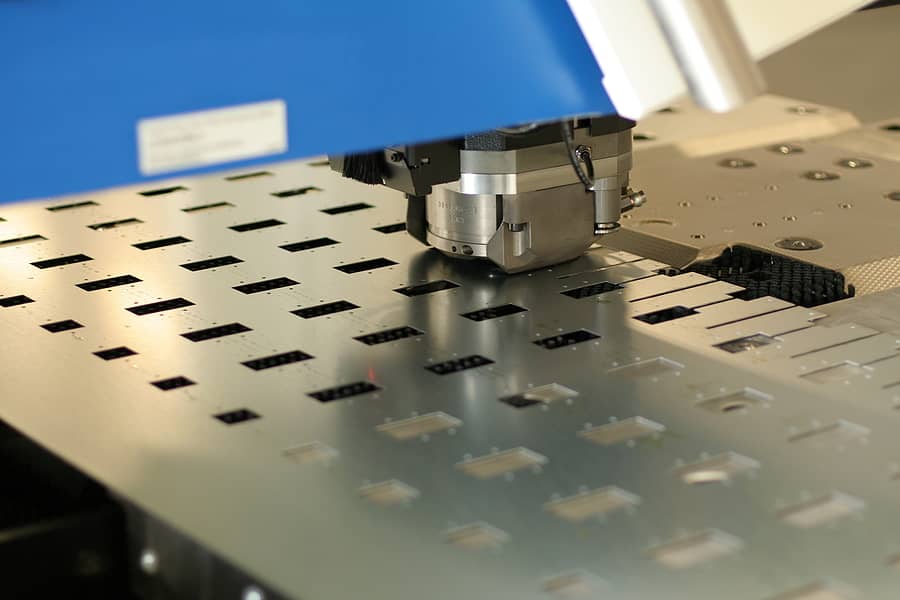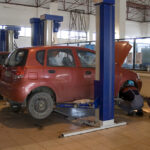Sheet metal plays a crucial role in the production of various components and products across a multitude of industries. Two common processes used in working with sheet metal are stamping and fabrication.
While they may seem similar, they serve different purposes and offer distinct advantages depending on the requirements of a project. In this article, we’ll delve into the differences between sheet metal stamping and sheet metal fabrication and discuss when it’s appropriate to choose each method.
Sheet Metal Stamping
Sheet metal stamping, also known as pressing, is a manufacturing process that involves forming flat sheet metal into a desired shape or contour using a stamping press and tooling. Here’s how the process typically unfolds:
- Tooling Design: The process begins with the design and fabrication of tooling, including dies and punches, which are used to shape the sheet metal into the desired form. The tooling is engineered to apply precise force and pressure to the metal.
- Blanking: A flat sheet of metal, usually in coil form, is fed into the stamping press. The press applies force to the sheet metal, pushing it into the cavity of the die to form the desired shape.
- Forming: The metal is formed into the desired shape as it conforms to the contours of the die. Depending on the complexity of the part, multiple stamping operations may be required to achieve the final shape.
- Trimming and Finishing: Once the part is formed, any excess material is trimmed away, and additional finishing processes, such as deburring or surface treatment, may be applied to achieve the desired surface quality.
Sheet metal stamping is ideal for producing high-volume parts with consistent dimensions and tight tolerances. It offers several advantages, including high-speed production, repeatability, and the ability to achieve complex geometries. Common applications of sheet metal stamping include automotive body panels, appliance components, and electronics.
Sheet Metal Fabrication
Sheet metal fabrication, on the other hand, encompasses a broader range of processes used to manipulate sheet metal into finished parts or products. Unlike stamping, which primarily involves forming, fabrication involves cutting, bending, welding, and assembling sheet metal to create various structures and components. Here’s an overview of the sheet metal fabrication process:
- Designing: Designers create sketches or models of the product.
- Cutting: The sheet metal is cut to size using various cutting methods, such as shearing, laser cutting, or plasma cutting, depending on the material and thickness.
- Bending: The metal is bent or folded into the desired shape using press brakes or other bending equipment. This process allows for the creation of angles, curves, and complex geometries.
- Welding: If multiple pieces of metal need to be joined together, welding is used to fuse them. Common welding techniques include MIG (Metal Inert Gas) welding, TIG (Tungsten Inert Gas) welding, and spot welding.
- Assembly: Once the individual components are formed and welded, they are assembled into the final product. This may involve additional fastening methods, such as riveting or adhesives.
Sheet metal fabrication offers versatility and flexibility, making it suitable for producing custom parts, prototypes, and small to medium-sized production runs. It allows for greater design freedom and customization compared to stamping, as parts can be fabricated using a combination of cutting, bending, and welding processes.
Choosing Between Stamping and Fabrication
So, when should you choose sheet metal stamping over fabrication, or vice versa? Here are some factors to consider:
- Volume and Repetition: Sheet metal stamping is ideal for high-volume production runs where consistency and repeatability are essential. As such, stamping is the way to go if you need to produce thousands or even millions of parts with minimal variation.
- Complexity of Parts: Stamping may be the better option if your parts have complex geometries or intricate shapes that cannot be achieved through simple bending and cutting. Stamping allows for the creation of precise contours and details that would be difficult or time-consuming to replicate through fabrication alone.
- Lead Time and Cost: Consider the lead time and cost implications of each process. Stamping often requires upfront tooling costs but can be more cost-effective for high-volume production in the long run. Fabrication may offer quicker turnaround times for prototyping and small production runs but may be more expensive per part.
Conclusion
Sheet metal stamping and sheet metal fabrication are two distinct processes used in metalworking, each offering unique advantages depending on the requirements of a project. By understanding the differences between these processes and considering factors such as volume, complexity, and lead time, you can make an informed decision on which method is best suited for your specific application.
If you’re looking for sheet metal fabrication services in Singapore, check us out at Monster Builder. As a trusted metal fabrication and machining company, we offer a range of services, including 3D printing and CNC machining.






